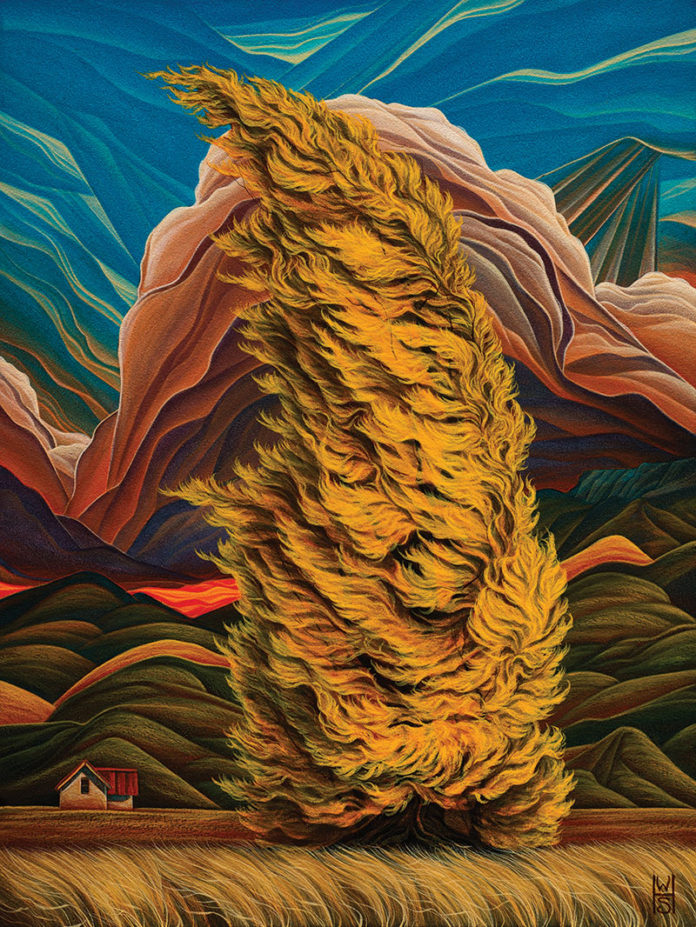Two renowned artists will soon be featured together in Santa Fe, New Mexico, this summer for an important group exhibition. Will you know the names?
Manitou Galleries will open a two-man show on June 27 featuring new works by painters William Haskell and Bryan Haynes. The works of the two painters complement one another beautifully. Haskell is specifically drawn to the regional landscapes and villages of the American Southwest. His signature drybrush watercolors and acrylics are often recognized for their depth and detail that “goes beyond mere description of subject and draws the viewer into the painting for a more intimate connection with everyday forms and a sense of place,” the gallery writes.
Historical figures, Native Americans, and local characters dominate the New Regionalist paintings by Bryan Haynes. Sculpted with contemporary design, Haynes’ pictures carefully capture the valleys, mesas, bends, and curves of the New Mexico landscape. Drawing upon the WPA style of the 1930s and early 20th-century Regionalism, Haynes’ paintings have a classic luminosity and timeless appeal.
Opening June 27, the exhibition continues through July 7. To learn more, visit Manitou Galleries.
This article was featured in Fine Art Today, a weekly e-newsletter from Fine Art Connoisseur magazine. To start receiving Fine Art Today for free, click here.








